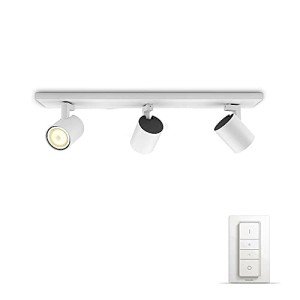11 Methods To Redesign Completely Your Shop Lighting UK
Shop Lighting UK: Illuminating the Retail Experience
In the ever-evolving world of retail, the value of shop lighting can not be overstated. It not just boosts the aesthetic appeal of products but likewise influences consumer habits, their mood, and the total shopping environment. With developments in technology and design, shop owners in the UK have a myriad of choices to choose from when it comes to lighting solutions. This post will check out the kinds of lighting offered, their advantages, and considerations for producing the ideal atmosphere in a retail area.
Value of Proper Shop Lighting
Reliable shop lighting plays an essential role in consumer experience and can considerably affect sales. Here are some key reasons that appropriate lighting is essential for retail environments:
- Highlighting Products: Good lighting accentuates items, making them more appealing to consumers.
- Developing Atmosphere: The best lighting can set the mood and evoke feelings, influencing purchasing decisions.
- Enhancing Safety: Well-lit shops are more secure, helping consumers navigate without risk of tripping or accidents.
- Improving Visual Merchandising: Proper lighting can boost displays, making them dynamic and attractive.
Types of Shop Lighting
Shop owners can select from different types of lighting, each serving various purposes, consisting of ambient, task, accent, and decorative lighting. Here's a breakdown of each type:
Type of Lighting
Description
Finest Uses
Ambient Lighting
Offers overall illumination to the space.
General retail areas like shops and supermarkets.
Job Lighting
Focuses on specific areas to improve presence for tasks.
Checkout counters and fitting spaces.
Accent Lighting
Highlights specific items or display screens, producing a centerpiece.
Show cases, art, or advertising items.
Decorative Lighting
Adds visual appeal and boosts the total decoration.
Chandeliers and special fixtures in high-end stores.
1. Ambient Lighting
Ambient lighting is the foundational lighting within a shop. It fills the whole area, making sure that clients can see and navigate easily. Sellers should think about utilizing LED panels or ceiling-mounted fixtures, as they offer energy performance and outstanding light distribution.
2. Job Lighting
Task lighting is essential for areas where specific activities take place, such as checkout counters or workstations. Shop owners can install under-cabinet lighting or track lights to focus lighting on these locations, improving the benefit and experience for both staff and customers.
3. Accent Lighting
Accent lighting helps draw attention to particular products or features within the store. This kind of lighting can be accomplished through spotlights, track lights, or tactically put wall-mounted fixtures. It is particularly effective for showcasing featured products, advertising screens, or art work, assisting client focus where it's most needed.
4. Decorative Lighting
Beyond functionality, decorative lighting elements include style and character to a retail space. Unique fixtures, such as pendant lights or oversized chandeliers, can produce a memorable atmosphere, particularly in stores or high-end retailers. Buy Bathroom Lighting UK illuminate however likewise boost the shop's branding and aesthetic appeal.
Picking the Right Lighting for Your Shop
When picking lighting for a retail environment, shop owners need to consider the list below aspects:
- Store Type: Different kinds of retail need varying lighting solutions. A fashion jewelry store may need softer, more focused lights, while a grocery store might require brighter ambient lighting.
- Color Temperature: The color of light can impact the understanding of items. Warm lights (under 3000K) develop a comfortable feel, while cool lights (above 3000K) can make an area feel more contemporary.
- Energy Efficiency: The use of LED lighting not just conserves energy but also minimizes expenses over time.
- Versatility: Install dimmers or adjustable fixtures to adapt lighting for different occasions or seasonal modifications.
The Future of Shop Lighting
As innovation progresses, shop lighting is ending up being significantly advanced. Here are some patterns forming the future of retail lighting in the UK:
- Smart Lighting Solutions: Integrated innovation permits for remote control and automation of lighting systems through mobile phones or home assistants.
- Sustainable Lighting: There is a growing focus on environmentally friendly options, with merchants going with products that lessen ecological effect.
- Focal Point Lighting: Retailers are increasingly using lighting to develop particular centerpieces that assist customer traffic and boost item screens.
FAQs about Shop Lighting in the UK
Q: What is the very best type of lighting for a clothing store?A: A combination of
ambient and accent lighting is normally best. Ambient lighting is needed for overall visibility, while accent lighting can help highlight key pieces or collections. Q: How can I make my shop lighting more energy-efficient? A: Consider using LED lights, setting up motion sensing units, or integrating
dimmers. This lowers energy usage and expenses in the long run. Q: Should I utilize natural light in my shop?A: Yes, using natural light can boost customer experience whilereducing energy expenses. Nevertheless, it is crucial to stabilize natural light with artificial lighting, especially on cloudy days. Q: How often ought to I replace my shop's lighting fixtures?A: This depends on the type of fixtures utilized. LED lights can last up to 25,000 hours, while traditional bulbs****
might require to be changed more often. Regular maintenance checks are advised. In an increasingly competitive retail environment, shop lighting plays an invaluable function in shaping consumer experiences and driving sales. Merchants in the UK have a large selection of options and technologies at their disposal to create the ideal atmosphere. By comprehending the value of the various kinds of lighting and how to implement them successfully, shop owners can boost their area, making shopping more pleasant for consumers while increasing their bottom line. 